Urban vs Nature Field Recording
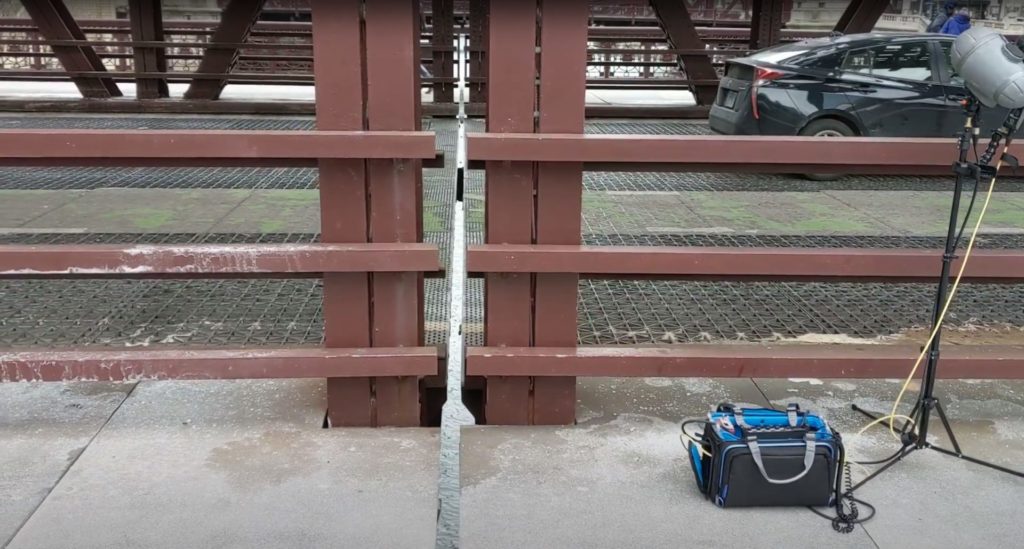
There is a ton of content out there about recording in nature. I haven’t seen nearly as much about urban environments. Every environment has it’s unique pros, cons, and challenges. Living in a city that’s not near any naturally quiet outdoor areas, I sometimes get jealous of folks with easier access to places where they can record lush nature soundscapes without man-made noise having a constant presence in their recordings.
The grass is always greener… The sounds are always cleaner… I’m sure some folks might be jealous of my easy access to trains, planes, traffic, large crowds, events, and the countless other opportunities presented to recordists like me in an urban environment. I’ve certainly learned to embrace my location. I’ve used it to create some popular sound effects libraries, and of course incorporate it into my sound design work on a daily basis.
DISCLAIMER: While I’ll talk in general terms about recording in a “city”, my experience largely comes from recording in Chicago. I recognize that every city is different and that not everything I talk about will apply to every dense city. However, I do think the thought processes and solutions I propose will either work or can be adapted to most large cities. I also talk about the unique difficulties of urban recording as compared to nature recording but fully understand and have experienced that the latter brings an entirely different set of complications and solutions. I don’t think one is harder than the other… just that one isn’t talked about as much.
Urban Ambience Recording
On the surface, it seems simple right? When you want to record urban ambience, you’re embracing all the noise that the city provides you. The kind of noise that kills nature recordings becomes music to your ears. You want all that urban sounding environment and it’s going to be a piece of cake to capture, right? You set up your mic and hit record and just allow the cityscape to do what it does. Wow, that was easy… This Stosh guy is writing a pointless post.
Hey! Sometimes, it is that easy! Sometimes the situation is right and you end up with exactly what you expected. There are, however, a number of ways things can take a turn. Let me present some potential problems and solutions.
Ambience Interference
In building background beds, it’s useful to have have separate subject-focused layers rather than an all encompassing ambience recording. Sure, that downtown recording with pedestrian chatter, vehicle traffic, train bys, and blaring horns sounds great. But when your client tells you they… “Love the crowd sounds! Can you turn that up?”, you’re a bit stuck.
So, when I’m recording urban ambience, I’m often trying to record a particular subject or theme. For the sake of this section, let’s say I’m trying to record a busy highway that runs through the city. I want that to be the predominant sound in my track, so how do I make that happen? There are plenty of sources of unwanted noise in the city. People and cars are everywhere. They’re very difficult to avoid, but with some planning and effort, they can be mitigated. Let’s start with an obvious one:
Location
As I’ve said, people and cars are everywhere in the city. But they’re not everywhere consistently. Where can we go to minimize them? Let’s start hammering down on potential locations.
The very first thing I do when I plan to record is open up Google Maps. It’s hard for me to fully explain the vast amount of knowledge gathering and detailed planning you can achieve before even arriving at a location.
Let’s take our busy highway example. The first thing I’d do is turn on satellite view and start scanning along the highway in question for potential locations to set up. There are plenty of parallel running city streets I could set up on where I’d certainly hear the highway, but there’s bound to be nearby cars on the street and/or pedestrians on the sidewalk interrupting the recording. Better keep looking.
One of my favorite locations to record from are parking garages. They’re almost perfect. Sure, people park there, but they do so, and then leave. They could be busy, but the top floor/roof on even the busiest parking garages is often near empty. People tend to take the first spot they see on the way up. Parking garages get you more isolated from the nearby city life just outside they’re walls. Plus, they’re generally well spread throughout a city and very easy to search for and spot in satellite view.
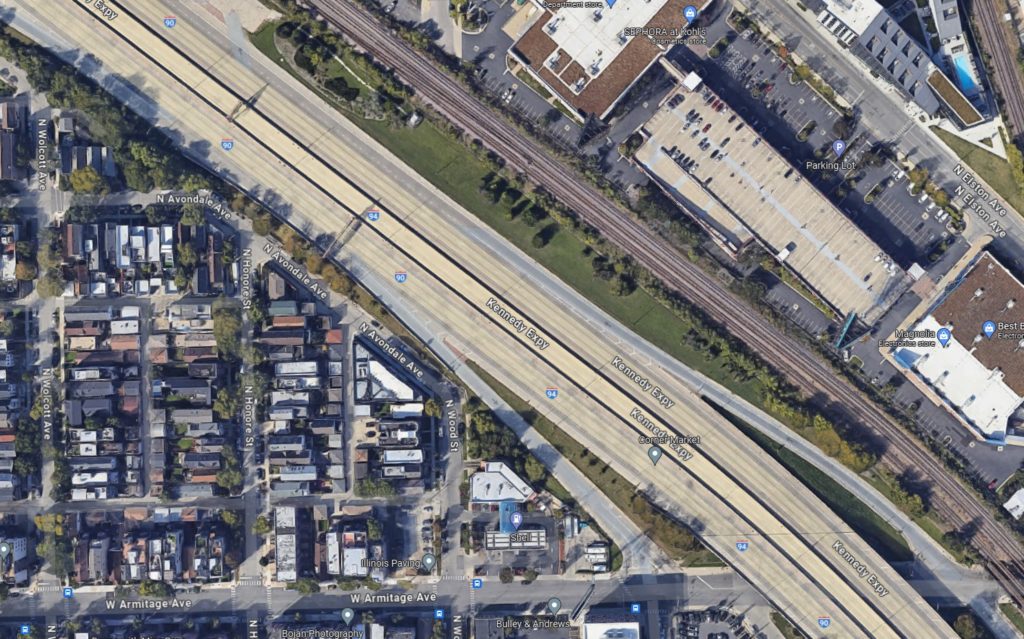
While I love them, they’re not perfect and can present some challenges of they’re own. Not all of them are publicly accessible, but that’s easily found out from Google Street-View/Search. There may be loud HVAC units on the roof, but those are generally visible in satellite view so you can plan accordingly. Some of them have stricter security that might not like someone hanging around too long. However, I’ve found I’ve almost never been approached by security when I simply park and place a mic on my car while monitoring from inside. (More on that later.)
But let’s say I want a more “washy” sound and need some distance between my recording location and the highway. How do I go about that in a dense urban environment while still minimizing unwanted noise?
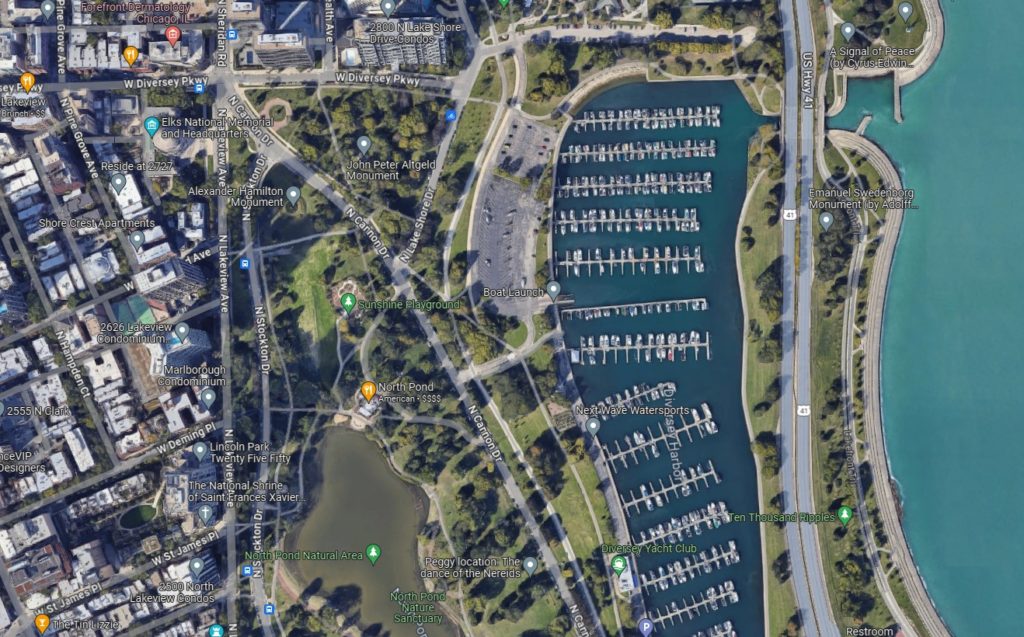
One of the easiest things to spot in satellite view is where buildings and streets are, and where they aren’t. One of the most accessible type of areas to get away from nearby city noise is parks. I’m lucky to be in a city where we have quite a lot of large parks and often use that to my benefit. Even in cities where there aren’t many parks, there are options like large parking lots, undeveloped areas, or perhaps even terrain to elevate you above the unwanted noise.
However busier parks can bring about a complication… people! People love to talk and laugh and yell and do anything they can to (mostly) unknowingly mess up your recordings. So why even bring up parks? Well, even in busy parks, it’s possible to avoid people… you just need to switch from planning a location to planning a:
Time
It’s generally pretty predictable where people will and won’t be at various times throughout the day. It used to be most people were working in office/commercial buildings from 9-5 on weekdays, but with so many people now working from home and freelancing, that’s no longer the case. All throughout the day, you can expect to see and hear people in most parts of the city. However, the later it gets into the night, peoples locations tend to become more predictable. The cool crowd is out at bars or concerts. The older folks are asleep on the couch with a Marvel movie playing in the background. The cool kids are emote-ing a new Fortnite dance on top of they’re fallen enemies. Meanwhile, the weirdos like me are out in a now empty park recording a distant highway they know they’re going to write a blog post about later. Take that, cool crowd!
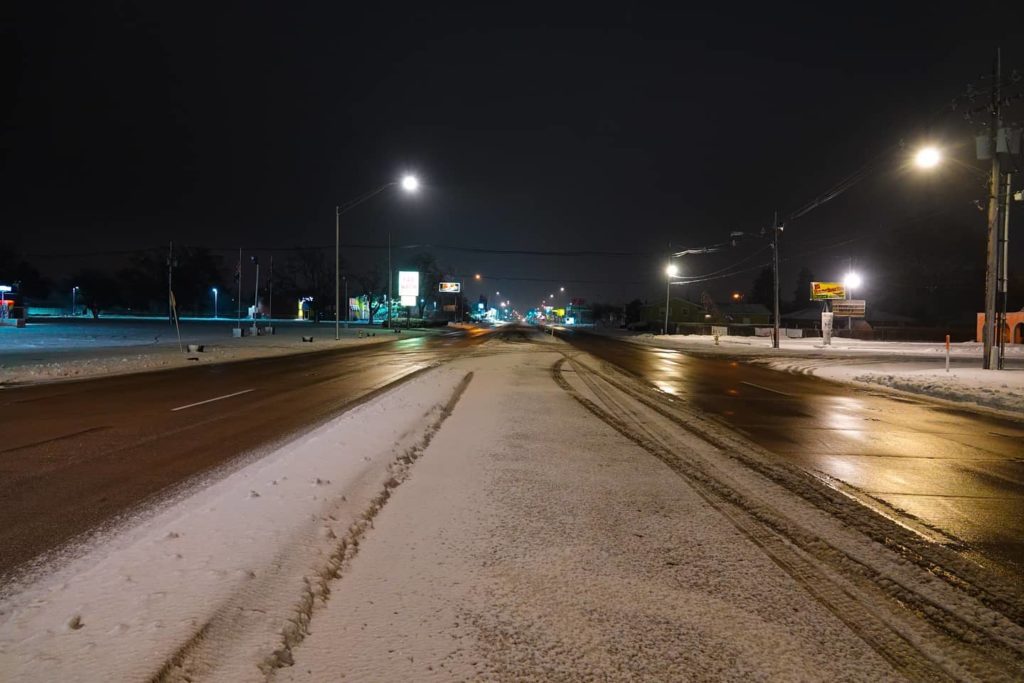
Ok, in a more serious sense, knowing where people are and aren’t through various points of the day/night is very useful. When you’re planning your recording, keep it in mind and use it to your advantage!
But what if it’s a beautiful night out and the vibes are just right for a huge super late night cook-out in the park you were planning to record in? Are your plans cooked? No! Let’s talk about:
Weather
People love good weather. Give city folks a cool spring day or a warm summer night and they’ll be outside, looking for potential recordings to mess up 😂. So what to do? Record in miserable weather. People hate bad weather. Have you heard them chat about it in elevators? Post about it online? As much as I (also) normally despise bad weather, when it comes to recording in the city, I LOVE it. It drives (normal) people inside and keeps them there. It makes their idea of making a quick run to the grocery store all the more undesirable, and your idea of the capturing the perfect recording all the more achievable.
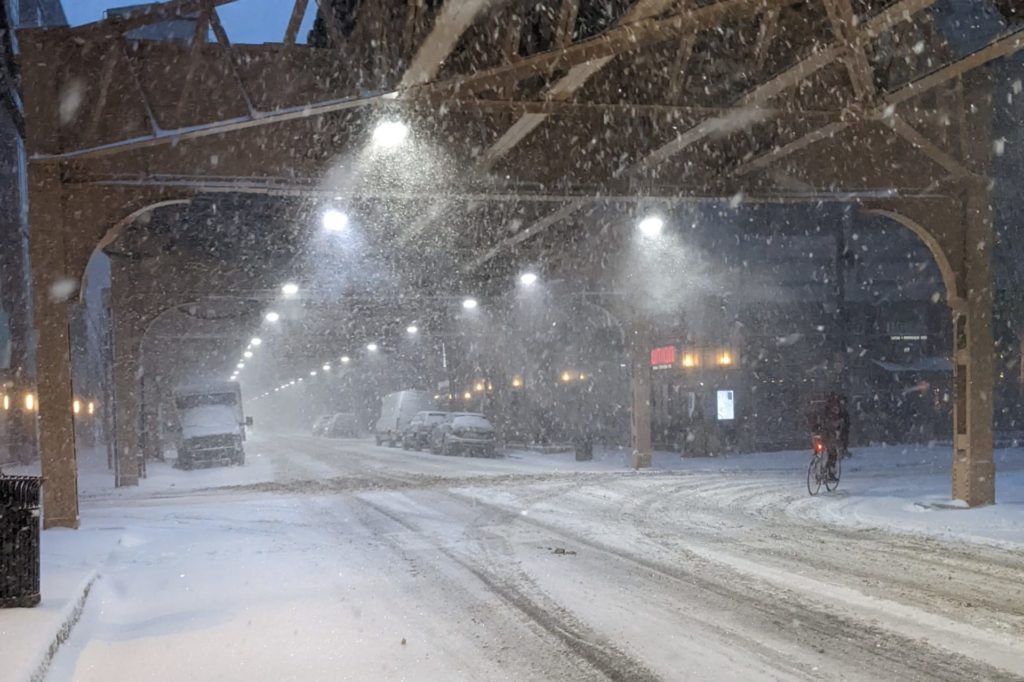
So, prepare yourself and your equipment to venture out in the elements. Chicago fairly reliably presents me with terrifically cold, snowy, nose hair freezing, borderline uninhabitable winters. Not every city has those, but most cities have weather/seasons that the general public finds undesirable. (I’m looking at you, L.A… With your coats and boots in +50°F/10°C “winters” 🥶) Use other peoples inclination to avoid bad weather as your invitation to record clean environments you might otherwise not have access to!
Gear/Setup Limitations
No matter the location, time of day, time of year, or weather… a dense urban environment does impose some limitations and considerations on your gear choices and set up. If you’re travelling far at all on foot, you’ll of course run into the same conundrum that nature field recordists have of how much gear to bring with you. But a city adds a some additional difficulties:
Attention
Gear, cables, and large microphone setups do a great job of grabbing attention. From pedestrians, security, police… everyone! Though my experience in Chicago has been most people just staring for a second and moving along, that’s certainly not always the case. People might come up and interrupt your recording or even call police if they feel something isn’t quite right with what you’re up to.
That’s why when recording urban ambience, I generally try to keep of a profile as possible. I’m going to be outside for a considerable time in the same location with plenty of time to attract attention. That means planning minimal equipment, and stealth/well hidden microphone setups where possible. In the literal sense… I’ve hidden mics on the sides of bags. I’ve used small handheld recorders. I’ve used in-ear binaural microphones. Anything to minimize the outward appearance of recording
When hiding gear is less ideal or impossible, I often “hide in plain sight”. One of my favorite things I’ve learned is if you have a DSLR or similar looking camera on a tripod people seem to pay much less attention to the blimp you have set up below it. The camera makes you seem all the more normal or even official… like you’re supposed to be there and shouldn’t be bothered. Cameras are more commonplace and people just tend to understand them more.
Even if you can’t hide equipment, don’t have a camera, and can’t avoid being around people, there are still habits you can utilize to limit the amount of unwanted attention you grab. In scenarios like that, it’s often helpful to try to make it abundantly clear what you’re doing. Wear large headphones. Don’t cover up all those lights from the recorder in your audio bag. Pretend to be adjusting the knobs on your equipment even if everything is already set. When being seen is the only option, it’s all about appearing non-suspicious and performing professionally. Pay attention to your surroundings, but try to not focus on the looks you might get. Look busy and stay focused. The more you behave like you aren’t sure, the more folks will notice and question what you’re up to. I won’t get into details, but there have been plenty of times I’ve been in locations I know I’m not exactly supposed to be in, but because I’ve behaved confidently, even police have paid me no attention. While I certainly can’t recommend others do the same, it does speak to the power of acting like you belong!
Another option is not stepping foot outside at all! If you have a vehicle, you can use it to become almost invisible while recording in a city. I can’t tell you how many times I’ve drove to a spot, rolled down my window, set my blimp on the roof or hood, and rolled the window up to listen to the environment from the comfort of my car. People will walk and drive within feet of your microphones and not bat an eye because they’re so used to seeing cars parked on the side of the road. You do have consider the time it takes for your car engine to cool down and stop making any residual clicks/noise, but recording from a car has been an indispensable technique for me in many situations.
Space
Cities are big, but often cramped and busy. In a forest you can set up multiple stands, attach mics to trees, and run cables and leave your recorder wherever you find most effective. The squirrels won’t complain (but might eat your cables!). On a sidewalk, however, you don’t have many of those options. Mic stands and audio bags become things blocking foot traffic. Mics attached to structures become highly suspicious. Cables become very real tripping hazards.

Making your kit as compact as possible is an important part of effectively and efficiently recording in a city. Because of everything stated above, I rarely have the opportunity to utilize spaced pairs or other large footprint techniques. So, I lean heavily on compact XY, MS/DMS, and handheld setups to make the most of the space I have to work with. Where it makes sense, I’ll often set up my equipment and walk away to a nearby bench or other spot to sit and not be in the way. This has the added benefit of drawing a bit less suspicion to yourself. I’ve noticed people will look at the equipment, but will rarely stop what they’re doing or say anything as they walk by.
Safety
This is a more difficult one to hammer clear universal points into, but I’d be remiss to not talk about it. When you’re moving around a city at all, safety should be on your mind. When you add expensive audio equipment into the mix, it be comes all the more important. Each city is different, and each person’s standard of what is “safe” is different. I can’t tell you what will or won’t work for you, but can talk about what generally works for me.
I’m fairly willing to be out in most anywhere in the city at any time of day or night with my audio equipment. When I say that, I don’t mean I’m out flaunting my equipment at 3am, or that I think I’m “tough”. I only mean that I know the situations I’m comfortable in, and the situations I’m not. Where I’m very comfortable, sure, I’ll stand outside with my equipment and record all day. Where that’s less the case, I make sure I take the precautions to ensure my safety. Often that means utilizing things I’ve talked about in this post. Hiding mics and equipment certainly can help to make me feel safer. In places and times I’m least comfortable, recording from a car is a great technique to have at my disposal. I feel safe knowing I can hear anyone or anything approaching me in my headphones and being able to start the car and pull away fast if it comes to that.
Above all, no recording is above your own safety and well-being. While getting out of your comfort zone is generally a good thing to do, it’s not always great when you add the complications of being distracted with expensive equipment in an urban environment. The best advice I can give you is to get to know your city as good as you can. That only comes with time. I’ve been in Chicago over a decade now, and still learn more about it’s neighborhoods everyday. Learn when and where you can feel confident and comfortable and then (and only then), use that knowledge to record safely!
Can I Ramble a Little Bit?
For a quite a while, I selfishly avoided writing content like this. I felt like the “tricks” I’d learned and picked up along the way were mine only… That sharing them would be somehow devaluing to my work.
Typing that, I realize even more so now how short-sighted that kind of thinking is. In my sound design and mixing work, I’m always excited to share techniques and discoveries… new and old, to coworkers and interns. To be honest, I’ve never thought twice about doing so. To a small degree, I understand the logic of withholding “tricks” from others. In one way, you’re aiding potential competition. If you feel you’ve got something that others don’t… and it benefits your work… why share it?
I know a whole lot more now about audio now than I did when I started in this industry. There are plenty of tricks, workflows, pieces of wisdom, and random bits of audio knowledge stuffed away haphazardly in my brain. Some of it I learned from practice. Some of it I learned by accident. The vast majority of it, I learned from someone else (in one way or another).
While in school, I learned from instructors and classmates. While working, I learned from clients and coworkers. In my free time, I’ve learned from forums, chat groups, social media, videos, blogs… All pieces of knowledge given to me from others. Who am I to withhold content like this that I think will help other field-recordists?
The ironic thing is none of what I’ve shared is groundbreaking. It’s not full of wild techniques no one has tried before. It’s simply a (hopefully somewhat) organized blog post of cumulative knowledge from my experience in the field, doing what I love. Many of you might have read it and found nothing new… but hopefully someone read it and found a new perspective or technique that can help them grow in their craft. Sharing knowledge is a beautiful thing and I aim to do more of it in regards to field recording.
Thanks for Reading!
This might be my longest blog post yet! Even though WordPress says’ it only took you ~15-20 minutes to read, I’m happy you took the time to do so! Though I wrote this article from the perspective of recording urban ambience, I do feel that most of it applies just as well to recording sound effects in cities (maybe even more-so in some cases!). I hope somewhere in here you found something helpful. If you did, or have a piece of advice, wisdom, or story of your own… feel free to leave a comment. Thanks for stopping by!
Tnx a lot very useful🙏❤
Great article. Thanks for sharing you experiences. Could you explain a little how you record from your car. I understand you out a blimp on the outside. Do you mean on the roof? If, as you said you could just drive off if there was a possibility of danger, how do you attach the blimp to the car.
Thanks again for your article.
Thanks for reading Andrew! Normally I’m using a flexible tripod like three Joby Gorillapod ones. Before I get started I get the legs in a position where it’s real easy to place it on the roof from inside the car.
In the case of having to getting out of a scenario fast, it either comes down to realizing early enough that I have the ~15 seconds to start the car, roll down the window, pull the mic in, and drive away… Or just starting the car and pulling away and hoping the XLR holds when the mic falls. In the latter scenario, I’m not worrying about what happens to my gear, just about safety. I’ve yet to be in a situation where that’s necessary, but have certainly pulled my gear in and drove off when something feels off.
What might be nice is affixing some kind of easy quick locking mount to the car roof, but I haven’t researched what that would take. I imagine vehicle camera mounts could be adapted!
Thank you for sharing your tips! Avoiding attention is probably my primary reason for leaving all the nice microphones at home and only using handheld recorders for urban recordings. I hope I can use some of your methods to make use of superior gear without getting interrupted.
Thanks for taking the time to read! I’ve always wondered if folks taking pictures before cameras became such commonplace had the same feelings recordists do in urban spaces. Consistent looks of confusion and needing to explain what they’re doing to random people.
Honestly over the years I’ve learned to more or less enjoy the interruptions when they happen (unless they’re ruining a very difficult to capture moment). Most people find it pretty neat when it’s properly explained. When I’ve got people to put on the headphones and listen to what I’m capturing that tends to make it click in their heads best.